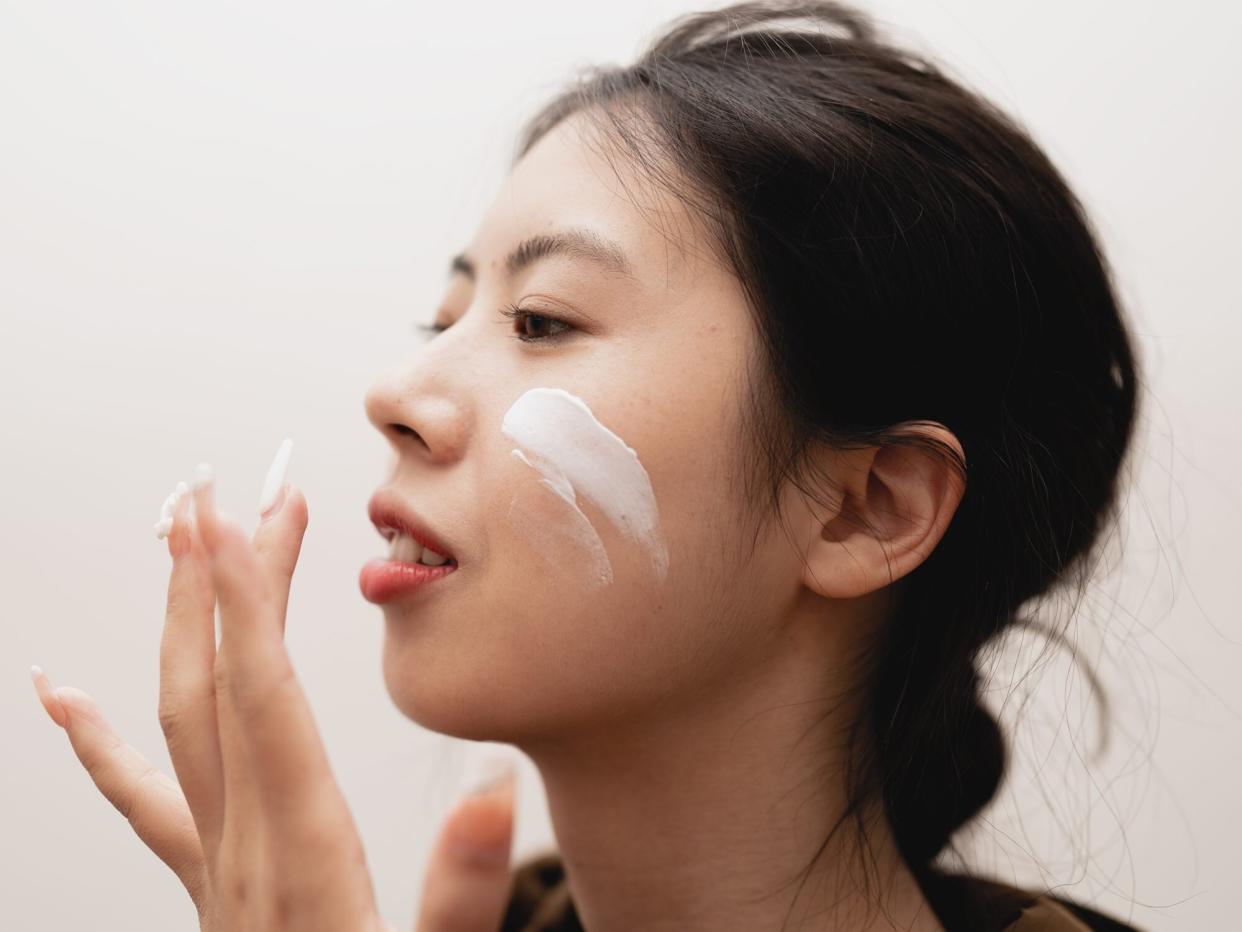What Happens If You Apply Your Skincare In The Wrong Order? We Asked Experts

LAW Ho Ming
If you've recently made a switch in your daily beauty routine—whether that be trying a new skincare-application technique to investing in a different product line—chances are TikTok did it first. A simple search yields thousands of videos, but with endless opinions being touted as fact, it can be hard to determine which tips are worth your time and which you can scroll by. This is especially important when it comes to skincare because you're dealing with some pretty serious consequences, from chemical burns to breakouts, if you do it wrong.
The latest trend skincare enthusiasts can't get enough of is the reverse skincare hack, which continues to gain thousands of views, likes, and comments. In short, it says that if you want glowing skin, you need to rethink the order of your skincare, specifically encouraging people to moisturize immediately after cleansing. If you're an avid skincare lover or #SkinTok user, you know this breaks the rules, so we spoke to board-certified dermatologists and cosmetic chemists to get the lowdown on reversing the order of skincare application.
What is the reverse skincare hack?
Cleansing is step one, followed by applying a thick layer of moisturizer as step two. Toner comes last, with the claim that doing this for 15 minutes will leave your skin glowing and plump.
Why does the order of skincare application matter?
The order matters because it determines what ingredients and products are the first to soak into your skin, which can ultimately affect how your skin looks and feels once your routine is complete," explains Shuting Hu, cosmetic chemist and founder of Acaderma. This means that if you apply in the wrong order, you could create a barrier on the skin and prevent active ingredients from penetrating it.
What is the correct order to apply skincare?
Applying skincare isn't a one-size-fits-all approach, but a good rule of thumb to practice is to use your morning routine to protect the skin—think SPF and vitamin C—and use your nighttime routine to correct and reverse damage with active ingredients like retinol.
Generally, products should be applied according to "their molecule size, from thinnest to thickest, meaning products like toners and serums should be applied first, then followed with heavier formulas like moisturizers and masks," says Dendy Engelman, M.D., board-certified cosmetic dermatologist in New York City.
The first step, a.m. or p.m., should always be cleansing because it's important to cleanse away dirt, oil, pollution, and product residue that you encounter throughout the day and night—damp skin is also more permeable than dry skin so it'll help your products absorb better.
Here's what an ideal routine should look like, according to Rina Allawh, M.D., board-certified dermatologist at Schweiger Dermatology Group in King of Prussia, Pennsylvania.
Morning:
Cleanse
Tone
Treat
Moisturize
Eye cream
SPF
Night:
Cleanse
Tone
Exfoliate (1-2 times a week)
Treat
Moisturize
Eye cream
Are there benefits to reversing your skincare?
We're sad to report that reversing your skincare has no real benefits and only offers a temporary glow boost. According to Emmy Ketcham, co-founder and CPO of Experiment, "applying a toner on top of the moisturizer isn't likely doing much more than creating an aesthetic effect, as the water and humectants in the toner are simply sitting on top of the occlusives in the moisturizer, creating a more hydrated appearance."
Are there side effects of applying skincare in the wrong order?
Since the lighter-molecule products (i.e. toners) are unable to penetrate, you're rendering the benefits of your skincare product moot. Furthermore, you're actually "watering it down and increasing your skin's dehydration because moisturizers already create a barrier on the skin, and this application technique causes the toner to sit on that already created barrier and prevent further absorption," says Dr. Allawh. "If the toner used is clarifying or more on the acidic side, there's a risk of it breaking down the products applied beforehand and causing the skin to become further imbalanced because this type of barrier can also trap sebum, dead skin cells and bacteria in the pores, causing acne breakouts and preventing the skin from breathing," adds Dr. Engelman.
Are there alternative techniques for long-lasting hydration?
For people looking for real hydration, make sure to use alcohol-free formulas that contain hyaluronic acid, pure squalene, or glycerin. As for the order, "always apply a hydrating toner under a moisturizer, and finish with a damp cotton pad or reusable silicone sheet mask for better occlusion," says Ketcham.

